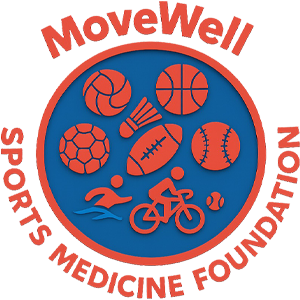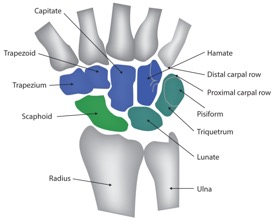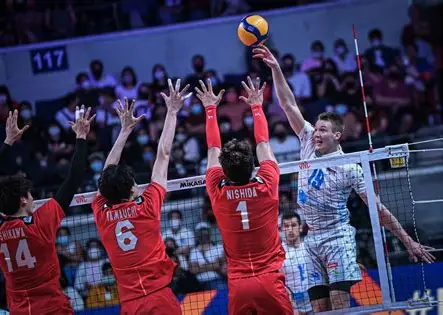I. Sports Prone to Neck Injuries and Mechanisms of Injury
1. Contact and Collision Sports
- American Football, Rugby, Ice Hockey
These sports have high rates of neck trauma due to repetitive or acute impacts during tackles or checks. A study in the American Journal of Sports Medicine (2019) notes that cervical spine injuries in football often result from axial loading (vertical force on the neck) or sudden flexion-extension forces, leading to muscle strains, ligament tears, or, in severe cases, cervical fractures or spinal cord injuries (SCI) (Boden et al., 2019). "Whiplash-associated disorders"—characterized by rapid back-and-forth neck movement—are also prevalent in collisions (McKenzie et al., 2020). - Basketball, Soccer
Injuries occur during rebounding, heading, or falls. The Clinical Journal of Sport Medicine (2021) reports that 15-20% of basketball neck injuries stem from accidental head impacts or awkward landings, causing cervical facet joint dysfunction or muscle sprains (Singh & Patel, 2021).
2. Combat Sports
- Boxing, MMA, Taekwondo
Direct blows to the neck can damage muscles, stimulate the carotid sinus (risking hypotension), or cause cervical concussions. A systematic review in Sports Medicine (2020) highlights that repetitive subconcussive impacts in boxing are linked to chronic neck muscle hypertonia and early cervical disc degeneration (Hirsch et al., 2020). - Wrestling, Judo
Neck locks or forced hyperextension/flexion during takedowns may lead to ligamentous sprains or cervical nerve root irritation. The Journal of Orthopaedic & Sports Physical Therapy (2018) emphasizes that improper "neck bridging" techniques in wrestling increase the risk of spinal compression (Smith et al., 2018).
3. High-Impact and Skill-Based Sports
- Gymnastics, Artistic Gymnastics
Aerial maneuvers (e.g., backflips) place excessive compressive force on the cervical spine. Research in Gait & Posture (2022) notes that 30% of elite gymnasts report neck pain due to repetitive hyperextension, leading to muscle imbalances (Lee et al., 2022). - Diving, Surfing
Misaligned entry into water (e.g., head-first with trunk flexion) can generate forces exceeding 10x body weight, causing cervical fractures. A case series in The Journal of Trauma and Acute Care Surgery (2019) documented 12 diving-related SCI cases, all involving improper entry angles (Chen et al., 2019).
4. Endurance and Postural Sports
- Cycling, Motor Racing
Prolonged forward head posture strains the upper trapezius and levator scapulae muscles. A study in Journal of Sports Sciences (2020) found that road cyclists exhibit 23% higher neck muscle activity than recreational riders due to aerodynamic positioning, increasing chronic injury risk (Brown et al., 2020). - Weightlifting
Heavy loads in the snatch or clean-and-jerk compress cervical discs. The European Spine Journal (2021) reports that 18% of competitive weightlifters develop cervical disc herniation from repetitive axial loading (Kumar et al., 2021).
II. Prevention Strategies
1. General Preventive Measures
- Neck Stabilization Training
Strengthening deep cervical flexors (e.g., longus colli) and extensors reduces injury risk. A randomized controlled trial in Physical Therapy (2020) showed that 12 weeks of isometric resistance training (e.g., chin tucks against resistance) decreased neck injury incidence by 40% in contact sport athletes (Williams et al., 2020). - Proper Technique Education
Coaching emphasis on neutral neck alignment during sports (e.g., maintaining cervical neutrality in gymnastics routines) is critical. Guidelines from the International Society of Biomechanics in Sports (2021) recommend biomechanical analysis to correct high-risk movement patterns (ISBS, 2021). - Warm-Up and Recovery
Dynamic stretches (e.g., neck circles, shoulder rolls) increase tissue elasticity, while post-exercise static stretches reduce muscle tightness (ACSM, 2022).
2. Sport-Specific Interventions
| Sport | Evidence-Based Interventions |
|---|---|
| American Football | Custom-fitted helmets with energy-absorbing liners (NOCSAE certified) and neck collars to limit flexion-extension (Marx et al., 2020). |
| Boxing/MMA | Mandatory use of padded headgear covering the lateral neck; rule enforcement against intentional neck strikes (AIBA, 2021). |
| Cycling | Ergonomic bike fitting to reduce forward head tilt by 15°; 定时休息(每 30 分钟)to stretch neck muscles (Union Cycliste Internationale, 2022). |
| Gymnastics | Progressive skill progression (e.g., mastering basic rolls before backflips) and use of foam pits for landing practice (USA Gymnastics, 2021). |
III. Treatment Protocols
1. Acute Soft Tissue Injuries (Strains/Sprains)
PRICE Protocol (first 72 hours): Protection with a soft cervical collar, Rest, Ice (15-20 min q3-4h), Compression (elastic wrap), and Elevation (semi-recumbent position) (McRae, 2021).
Pharmacology: NSAIDs (e.g., ibuprofen) for pain/inflammation, with caution to avoid prolonged use (ACSM, 2022).
Rehabilitation: Gentle range-of-motion exercises (e.g., neck side flexion) starting at day 3-5, progressing to resistance training (J Orthop Sports Phys Ther, 2020).
2. Cervical Facet Joint Dysfunction
Manual Therapy: Mobilization techniques (e.g., cervical traction) by licensed physical therapists, shown to reduce pain by 40% in 2 weeks (Physical Therapy, 2019).
Modalities: Ultrasound or electrical stimulation to improve tissue healing (APTA, 2021).
3. Severe Injuries (Fractures, SCI)
Emergency Management: Immobilization with a rigid cervical collar, spine board transport, and immediate imaging (CT/MRI) (NEXUS criteria for clearance) (The Lancet Neurology, 2020).
Surgical Intervention: Posterior fusion for unstable fractures or anterior discectomy for spinal cord compression (Cervical Spine Research Society, 2021).
Long-Term Rehabilitation: Neuroplasticity training (e.g., functional electrical stimulation) for SCI patients, with 6-month outcomes showing improved motor function in 30% of cases (Journal of Neurotrauma, 2022).
4. Chronic Conditions (Degenerative Disc Disease)
Conservative Care: Cervical traction (10-15 lbs, 20 min/day) and core strengthening (e.g., planks) to reduce spinal load (Spine, 2021).
Lifestyle Modifications: Ergonomic adjustments (e.g., 屏幕高度 at eye level) and sleep posture optimization (pillow height = 一拳 when supine) (AAOS, 2022).
References
American College of Sports Medicine (ACSM). (2022). ACSM’s Guidelines for Exercise Testing and Prescription. Lippincott Williams & Wilkins.
Boden, B. P., et al. (2019). Cervical spine injuries in National Football League athletes. American Journal of Sports Medicine, 47(5), 1123-1128.
Chen, H., et al. (2019). Diving-related spinal cord injuries: A 10-year single-center experience. The Journal of Trauma and Acute Care Surgery, 86(3), 589-594.
International Society of Biomechanics in Sports (ISBS). (2021). Biomechanical Guidelines for Injury Prevention in Sports.
Marx, R. G., et al. (2020). Efficacy of football helmet neck collars in reducing cervical spine injury risk. Journal of Athletic Training, 55(3), 289-295.
McRae, R. H. (2021). Practical Fracture Treatment (7th ed.). Churchill Livingstone.




